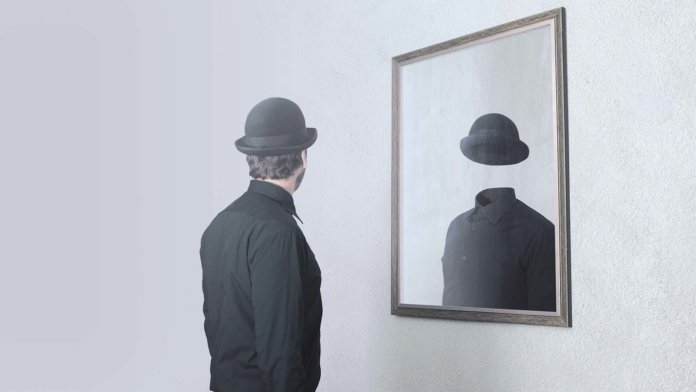A digital afterlife may soon be within reach, but it might not be for your benefit.
The reams of data we’re creating could soon make it possible to create digital avatars that live on after we die, aimed at comforting our loved ones or sharing our experience with future generations.
That may seem like a disappointing downgrade from the vision promised by the more optimistic futurists, where we upload our consciousness to the cloud and live forever in machines. But it might be a realistic possibility in the not-too-distant future—and the first steps have already been taken.
After her friend died in a car crash, Eugenia Kuyda, co-founder of Russian AI startup Luka, trained a neural network-powered chatbot on their shared message history to mimic him. Journalist and amateur coder James Vlahos took a more involved approach, carrying out extensive interviews with his terminally ill father so that he could create a digital clone of him when he died.
For those of us without the time or expertise to build our own artificial intelligence-powered avatar, startup Eternime is offering to take your social media posts and interactions as well as basic personal information to build a copy of you that could then interact with relatives once you’re gone. The service is so far only running a private beta with a handful of people, but with 40,000 on its waiting list, it’s clear there’s a market.
Comforting—Or Creepy?
The whole idea may seem eerily similar to the Black Mirror episode Be Right Back, in which a woman pays a company to create a digital copy of her deceased husband and eventually a realistic robot replica. And given the show’s focus on the emotional turmoil she goes through, people might question whether the idea is a sensible one.
But it’s hard to say at this stage whether being able to interact with an approximation of a deceased loved one would be a help or a hindrance in the grieving process. The fear is that it could make it harder for people to “let go” or “move on,” but others think it could play a useful therapeutic role, reminding people that just because someone is dead it doesn’t mean they’re gone, and providing a novel way for them to express and come to terms with their feelings.
While at present most envisage these digital resurrections as a way to memorialize loved ones, there are also more ambitious plans to use the technology as a way to preserve expertise and experience. A project at MIT called Augmented Eternity is investigating whether we could use AI to trawl through someone’s digital footprints and extract both their knowledge and elements of their personality.
Project leader Hossein Rahnama says he’s already working with a CEO who wants to leave behind a digital avatar that future executives could consult with after he’s gone. And you wouldn’t necessarily have to wait until you’re dead—experts could create virtual clones of themselves that could dispense advice on demand to far more people. These clones could soon be more than simple chatbots, too. Hollywood has already started spending millions of dollars to create 3D scans of its most bankable stars so that they can keep acting beyond the grave.
It’s easy to see the appeal of the idea; imagine if we could bring back Stephen Hawking or Tim Cook to share their wisdom with us. And what if we could create a digital brain trust combining the experience and wisdom of all the world’s greatest thinkers, accessible on demand?
But there are still huge hurdles ahead before we could create truly accurate representations of people by simply trawling through their digital remains. The first problem is data. Most peoples’ digital footprints only started reaching significant proportions in the last decade or so, and cover a relatively small period of their lives. It could take many years before there’s enough data to create more than just a superficial imitation of someone.
And that’s assuming that the data we produce is truly representative of who we are. Carefully-crafted Instagram profiles and cautiously-worded work emails hardly capture the messy realities of most peoples’ lives.
Perhaps if the idea is simply to create a bank of someone’s knowledge and expertise, accurately capturing the essence of their character would be less important. But these clones would also be static. Real people continually learn and change, but a digital avatar is a snapshot of someone’s character and opinions at the point they died. An inability to adapt as the world around them changes could put a shelf life on the usefulness of these replicas.
Who’s Calling the (Digital) Shots?
It won’t stop people trying, though, and that raises a potentially more important question: Who gets to make the calls about our digital afterlife? The subjects, their families, or the companies that hold their data?
In most countries, the law is currently pretty hazy on this topic. Companies like Google and Facebook have processes to let you choose who should take control of your accounts in the event of your death. But if you’ve forgotten to do that, the fate of your virtual remains comes down to a tangle of federal law, local law, and tech company terms of service.
This lack of regulation could create incentives and opportunities for unscrupulous behavior. The voice of a deceased loved one could be a highly persuasive tool for exploitation, and digital replicas of respected experts could be powerful means of pushing a hidden agenda.
That means there’s a pressing need for clear and unambiguous rules. Researchers at Oxford University recently suggested ethical guidelines that would treat our digital remains the same way museums and archaeologists are required to treat mortal remains—with dignity and in the interest of society.
Whether those kinds of guidelines are ever enshrined in law remains to be seen, but ultimately they may decide whether the digital afterlife turns out to be heaven or hell.
Image Credit: frankie’s / Shutterstock.com



